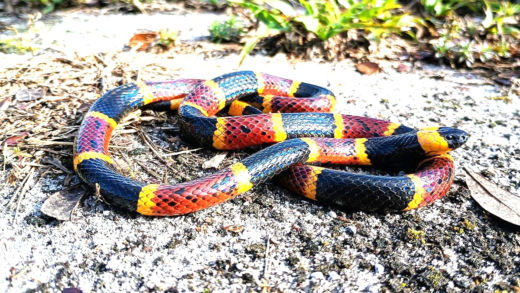Fleas are small pests that can significantly affect pets and humans. Identifying them early, understanding how to treat infestations, and implementing prevention strategies are key to maintaining a flea-free environment. Regular cleaning, pet grooming, and timely treatments can effectively manage and prevent flea issues.
Identifying Fleas: What They Are and How They Affect Us
Fleas are tiny, wingless insects that thrive on the blood of mammals and birds. These pests can be a significant nuisance, especially for pet owners, as they can cause discomfort and health issues for both animals and humans. Fleas are notorious for their ability to reproduce rapidly; a single female flea can lay up to 50 eggs daily, leading to a quick infestation.
Fleas can transmit various diseases and parasites, including tapeworms and typhus, which can affect both pets and humans. Their bites can lead to allergic reactions, causing severe itching and discomfort. Identifying fleas early is crucial to mitigate their impact on your pets and home.
How to Spot a Flea Infestation in Your Home
To detect a flea infestation, look for several key indicators:
- Flea Dirt: Small black specks (flea feces) on pet bedding or carpets.
- Visible Fleas: Adult fleas are about 1/8 inch long and can be seen jumping on pets or surfaces.
- Scratching: Pets may scratch or bite at their skin more than usual.
- Flea Eggs: These small white eggs can be found in pet bedding or around the house.
- Flea Bites: Red, itchy spots on your pet or yourself may indicate fleas.
Regularly checking your pets and home can help catch fleas before they become a larger problem. If you suspect an infestation, acting quickly is essential to prevent further spread.
The Signs of Flea Bites: How to Recognize Them on Pets and Humans
Flea bites can appear as small, red, itchy bumps on the skin. In pets, these bites are often found around the neck, tail, and belly. Signs to look for include:
- Itching and Scratching: Pets may scratch excessively or bite at their skin.
- Red Bumps: Small, raised welts on the skin where fleas have bitten.
- Hair Loss: Excessive scratching can lead to bald patches.
In humans, flea bites typically appear in clusters and can cause discomfort, similar to mosquito bites. Identifying these signs promptly can help in treating the issue effectively. If you notice these symptoms, it’s vital to address the underlying flea problem to prevent further irritation and health risks.
Best Methods to Get Rid of Fleas in Your Home
Fleas can be a real headache when they invade your home. To effectively eliminate them, consider the following methods:
- Vacuuming: Regularly vacuum your home, especially carpets, rugs, and pet areas. This helps remove adult fleas, eggs, and larvae.
- Wash Bedding: Wash all pet bedding and any fabric items in hot water to kill fleas and their eggs.
- Flea Traps: Use flea traps that attract fleas with light and heat. These traps capture fleas, reducing their population.
- Insect Growth Regulators (IGRs): IGRs prevent flea eggs from hatching and larvae from developing into adults. They can be sprayed in areas where fleas are likely to hide.
- Professional Pest Control: If the infestation is severe, consider hiring a pest control professional who can apply targeted treatments safely and effectively.
Combining these methods often yields the best results. It’s crucial to be persistent, as fleas can quickly return if not completely eradicated.
Natural Remedies for Fleas: What Works?
Many pet owners prefer natural remedies to combat fleas. Here are some effective options:
- Diatomaceous Earth: This natural powder can be sprinkled on carpets and pet bedding. It dehydrates and kills fleas without chemicals.
- Essential Oils: Oils like lavender, peppermint, and cedarwood repel fleas. Dilute them with water and spray around your home.
- Salt: Sprinkling salt on carpets can dehydrate flea eggs and larvae. Leave it for a few days before vacuuming.
- Apple Cider Vinegar: A mixture of equal parts vinegar and water can be sprayed on pets to repel fleas. Ensure it’s safe for your specific pet.
While natural remedies can be effective, they may require consistent application and patience to see results.
Chemical Treatments: Are They Safe Around Pets and Kids?
Chemical treatments can be effective against fleas, but safety is a concern, especially for homes with pets and children. Here’s what to consider:
- Read Labels: Always check product labels for safety instructions regarding pets and children.
- Spot Treatments: Use spot-on treatments for pets that are specifically designed for their weight and age. Follow the application instructions closely.
- Timing: Apply chemical treatments when pets and children are not in the area. Ensure the treated space is ventilated before allowing them back.
- Consult a Veterinarian: Before using any chemical treatment on pets, consult with your veterinarian to ensure it’s safe.
While chemical treatments can provide immediate relief from fleas, always prioritize safety when using them in your home.
Preventing Fleas from Coming Back: Tips and Tricks
Fleas can be persistent pests, but there are several strategies to keep them from returning. Prevention is often more effective than treatment. Here are some essential tips to maintain a flea-free environment:
- Regular Cleaning: Vacuum your home frequently, focusing on carpets, rugs, and areas where your pets spend time. This helps remove flea eggs and larvae.
- Pet Grooming: Regularly bathe and groom your pets using flea prevention shampoos and treatments. This reduces the chances of fleas infesting your pets.
- Yard Maintenance: Keep your yard tidy by mowing the lawn and trimming shrubs. Fleas thrive in tall grass and shaded areas.
- Use Flea Collars: Consider using flea collars for pets as a preventive measure. They can repel fleas and reduce the risk of infestation.
- Professional Treatments: Schedule regular pest control treatments for your home, especially if you live in an area prone to flea infestations.
Implementing these preventive measures can significantly decrease the likelihood of fleas returning to your home, ensuring a comfortable environment for both you and your pets.
What to Do If My Pet Has Fleas: A Quick Guide
If your pet has fleas, it’s important to act quickly to alleviate their discomfort and prevent a wider infestation. Here’s a quick guide:
- Immediate Bathing: Bathe your pet with a flea shampoo to remove fleas and soothe irritated skin. Make sure the shampoo is safe for your type of pet.
- Consult a Veterinarian: Seek advice from your vet regarding effective flea treatments that are appropriate for your pet’s age and health condition.
- Treat Your Home: After treating your pet, focus on your home. Vacuum thoroughly and wash any bedding or fabrics your pet uses.
- Monitor Your Pet: Keep an eye on your pet for any signs of itching or discomfort after treatment. If symptoms persist, consult your vet again.
- Follow Up Treatments: Use follow-up flea treatments as recommended by your veterinarian to ensure all fleas and their eggs are eliminated.
By taking these steps, you can help your pet recover from fleas and prevent future infestations effectively.
How Often to Treat Your Home for Fleas
Knowing how often to treat your home for fleas is crucial for effective pest management. Here’s a guideline to help you maintain a flea-free home:
- Regular Vacuuming: Vacuum at least once a week, especially in areas where pets frequent. This helps remove eggs and larvae before they develop into adults.
- Monthly Treatments: Apply flea treatment products to your home monthly, particularly during peak flea season, which is typically in warmer months.
- After Infestation: If you’ve had a flea infestation, treat your home more frequently (every 2-3 weeks) until the problem is under control.
- Professional Pest Control: If you hire pest control services, follow their recommendations for follow-up treatments based on your specific situation.
Regular treatment and monitoring can keep your home safe from fleas and protect your pets from discomfort.





Comments are closed.